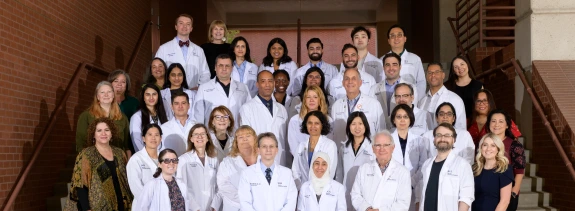Department of Neurology

Our mission is to provide excellence in education, research and patient care for the people of Arizona and beyond.
The neurologists of tomorrow gain hands-on experience in behavioral neurology, cerebrovascular disease, epilepsy, headache, movement disorders, neuromuscular disease and clinical neurophysiology. Basic and clinical researchers solve the mysteries of epilepsy, stroke, movement disorders, Alzheimer’s disease, headache, neuromuscular diseases and neuroimmunology.
Neurology Department News
In the Headlines
April 22, 2025 | New York Times
“Sex hormones are brain hormones. What does this mean for treating brain diseases?”
Professor of Pharmacology and Neurology Roberta Diaz Brinton, PhD
January 22, 2025 | Diversity Woman
“Your well-being: One thing at a time”
Associate Professor of Neurology Marisa Menchola, PhD
Department Calendar
There are no upcoming events listed.
Banner Health Appointments
Make an Appointment with Banner Health
Call: 520-694-8888
Banner – University Medicine North
3838 N. Campbell Ave.
Tucson, AZ 85719
520-694-8888
Banner – University Medicine Clinic South
2800 East Ajo Way
Tucson, AZ 85713
520-874-2000




